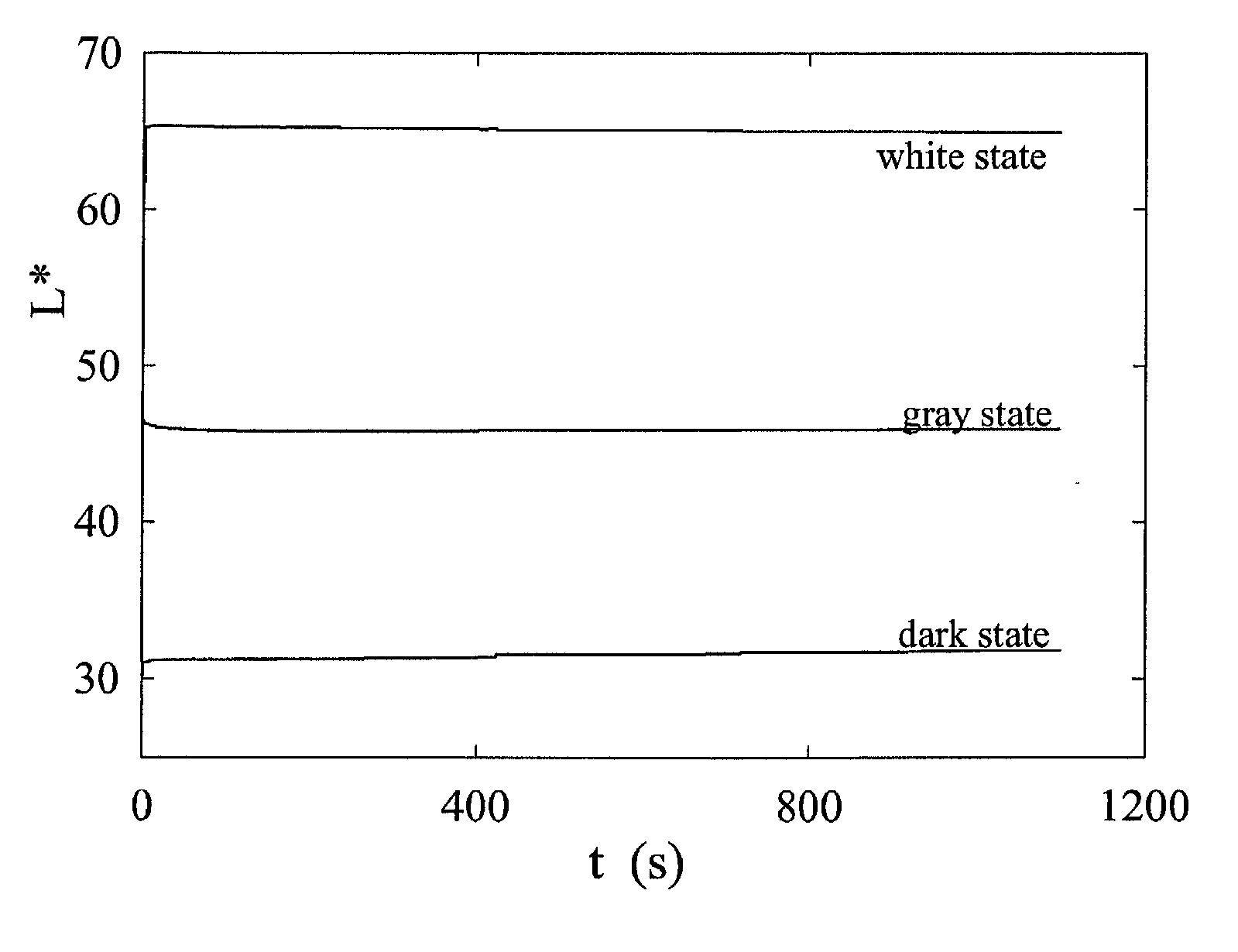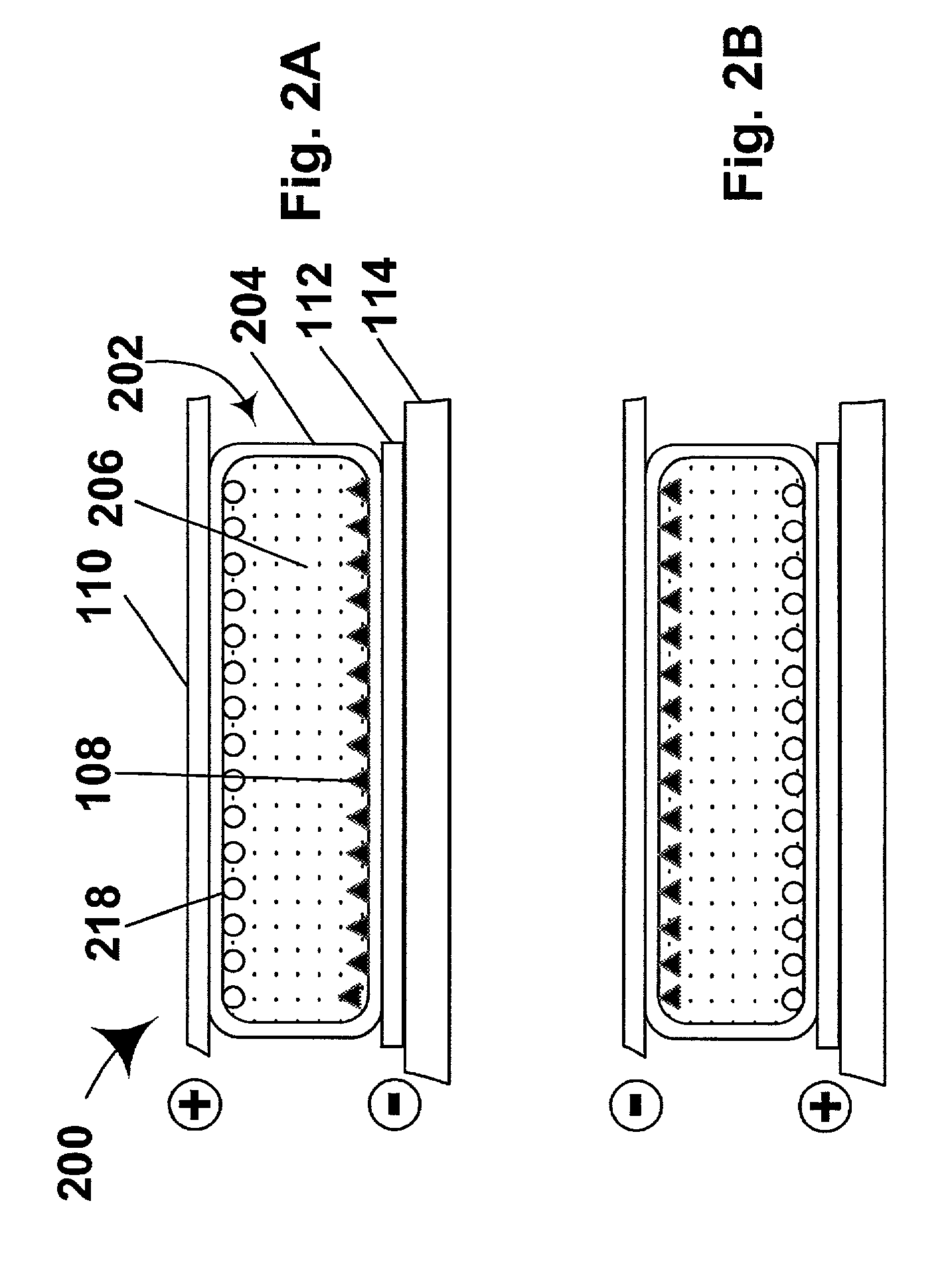Electrophoretic medium and display with improved image stability
a technology of electrophoretic media and image stability, applied in static indicating devices, instruments, non-linear optics, etc., can solve the problems of limiting image stability in electrophoretic displays, inadequate service life of these displays, and preventing widespread use, so as to improve the image stability of electrophoretic media, increase the switching time of media, and stabilize gray states
- Summary
- Abstract
- Description
- Claims
- Application Information
AI Technical Summary
Benefits of technology
Problems solved by technology
Method used
Image
Examples
example 2
[0083] This Example illustrates that the addition of PIB to the suspending fluid in Medium B produces an increase in image stability greater than that attributable to the increase in relative viscosity caused by the PIB addition.
[0084] The PIB and Isopar V addition experiments of Example 1 were repeated with Medium B, except that 15 V switching pulses were used, this being the switching voltage for which Medium B was designed. The results are shown in the accompanying FIG. 6, from which it will be seen that the results achieved with Medium B are qualitatively similar to those achieved with Medium A, as described in Example 1 above, except that the reflectance persistence enhancement provided with PIB only occurs at higher concentrations (greater than about 1.1 percent by weight) with Medium B.
example 3
[0085] This Example illustrates that the images produced using Media A and B with the addition of PIB degrade more slowly than do the images from modified Media A and B having a suspending fluid of essentially the same viscosity but lacking PIB.
[0086] A Medium A display was prepared with 1.47 percent by weight of PIB added to produce a relative viscosity (.eta..sub.rel, the ratio of the viscosity of the modified medium to the unmodified medium) of 3.90. A similar Medium A display was prepared by using Isopar V to provide a similar relative viscosity (.eta..sub.rel=3.60). Also, a similar pair of Medium B displays were prepared, one modified with 1.40 percent by weight of PIB (.eta..sub.rel=3.66) and the other with Isopar V (.eta..sub.rel=3.60).
[0087] Both pairs of displays were driven to their white state as described in Examples 1 and 2 above, and the L* values of all four displays were monitored over time. The results for the Medium A displays are shown in FIG. 7 and those for the ...
example 4
[0089] This Example illustrates that this invention allows the stabilization not only of the extreme (black and white) optical states of an electrophoretic display, but also intermediate gray states.
[0090] A display was prepared using Medium A containing 1.53 weight percent of PIB. The display was driven to its black and white states as described in Example 1 above, and also driven to an intermediate gray state by using a driving pulse shorter than that required to change the display from its black to its white state. The L* values of all three states were monitored over time, and the results are shown in FIG. 9. From this Figure, it will be seen that the addition of the PIB was successful in stabilizing the intermediate gray state as well as the black and white states.
PUM
| Property | Measurement | Unit |
|---|---|---|
| polydispersity index | aaaaa | aaaaa |
| diameters | aaaaa | aaaaa |
| diameters | aaaaa | aaaaa |
Abstract
Description
Claims
Application Information
 Login to View More
Login to View More - R&D
- Intellectual Property
- Life Sciences
- Materials
- Tech Scout
- Unparalleled Data Quality
- Higher Quality Content
- 60% Fewer Hallucinations
Browse by: Latest US Patents, China's latest patents, Technical Efficacy Thesaurus, Application Domain, Technology Topic, Popular Technical Reports.
© 2025 PatSnap. All rights reserved.Legal|Privacy policy|Modern Slavery Act Transparency Statement|Sitemap|About US| Contact US: help@patsnap.com



